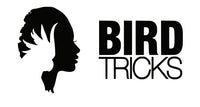
Camelot macaw
Birds have been around for millions of years, long before the human race was a twinkle in the eye of evolution. Since the very first their species made an appearance on this planet, the world has undergone many changes that presented numerous challenges to overcome. Their longevity can be attributed to an intense survival instinct, part of which is a well-developed understanding of the need for proper diet. After all, a weak parrot cannot outrun a predator – or survive an ice age. They have always known what to do.
Now that parrots are commonly kept in captivity, the responsibility falls to us to provide them with a diet that is as close to nature as it can be. Today’s parrot diet must cater to the needs of every system in their body, while being presented in a way that maintains their emotional health. That puts a lot of pressure on each meal and makes it doubly important to maximize every feeding by making sure that it is more than something that simply fills them up until the next one.
More and more, people are coming to understand that seed is not the main component in the parrot diet, but the question remains with many: “Then what DO I feed my bird?” followed with: “How do I get them to eat it?” These two questions are inexorably intertwined.
Anyone with a computer can find a list of foods that are appropriate for parrots. It will tell you which foods are dangerous, and those which are safe, but after that, you’re on your own.
What we really need to know to make the parrot diet work is which foods should be offered most or least, how they need to be prepared to remain safe and be palatable, and which are most beneficial nutritionally. And a list of foods that won’t kill your bird isn’t going to do a lot of good when you can’t get your bird to eat them.

Alexandrine parrot
Parrot feeding has been made very complicated in recent years when it really doesn’t need to be. Nutrition is a science, that is true. But more than anything else is involves common sense combined with commitment to change.
There’s a frightening amount of misinformation out there, as well as some great dietary advice which unfortunately utilizes terms that no one can understand. At the end of the day, we just want our parrots to be healthy using information we can trust…in words we can pronounce.
We realized that there is a huge void for practical information compiled by real people with real birds who were not born loving broccoli. We have faced and overcome feeding problems and serious disease with our own birds using the practical methods in Cooking For Parrots. Until now, there has been no single source with which to reference ALL of the information a bird owner needs to have. For many people, Birdtricks.com is that trusted source for information.
You are what you eat. Truer words were never spoken. A diet has to be more than that which subdues hunger pains. The foods that go into your parrot’s body will determine its quality of life.
Click here to learn how to make feeding your bird less confusing and stressful: Natural Feeding.
Patty Jourgensen specializes in avian health, behavior and nutrition and has been working with and caring for rescue birds since 1987.


Be the first to comment